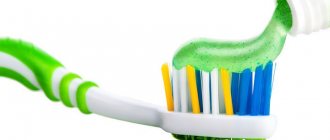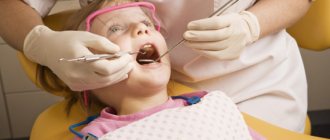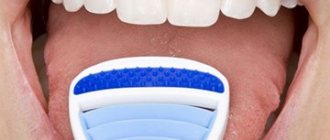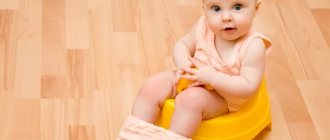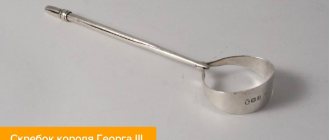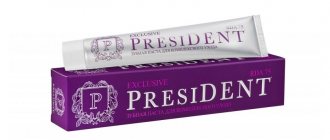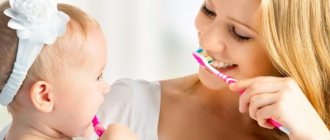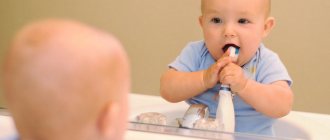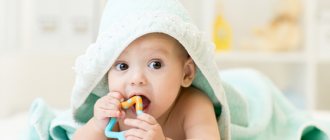With the birth of a child, young parents have many questions about caring for their baby, including his teeth. When visiting our dental clinic, parents often ask questions such as:
— Do baby teeth require care if they soon fall out and are replaced by permanent teeth?
— When is it time to start brushing your child’s teeth?
— How to properly brush the teeth of very young children?
— How to teach a child to take care of his teeth independently?
In this article, we would like to provide answers to some of the most frequently asked questions regarding brushing teeth in children, as well as give some useful tips to parents and their children that will help avoid such an unpleasant disease as dental caries.
Indications for the procedure
A small child is not able to effectively clean teeth from plaque and microorganisms.
He also cannot floss properly, causing food debris to accumulate in the spaces between his teeth. With the participation of parents, the effectiveness of the procedure increases, but it is better to entrust cleaning children's teeth to a professional. The reasons for visiting a doctor are:
- presence of tartar deposits;
- the presence of hard or soft plaque;
- inflammatory gum diseases;
- prevention of dental diseases.
Professional cleaning helps prevent the development of caries, stomatitis, pulpitis, periodontitis, gingivitis and papillitis. It helps remove microorganisms from the oral cavity that affect the functioning of organs and systems.
Contraindications for the procedure are:
- inflammation of the oral mucosa (stomatitis);
- fragile and thin tooth enamel;
- hypoplasia or erosion of enamel;
- allergic reaction to the drugs used;
- acute infectious diseases.
Oral hygiene in young children
The health of a child and healthy teeth are directly related to each other. Strong and healthy teeth are the key to a child’s overall health.
The quality of oral care significantly affects the intensity of diseases of the teeth and surrounding tissues. Lack of regular dental care in children leads to the accumulation of microbial plaque, which interferes with the process of enamel maturation. In places where plaque accumulates, caries and gum inflammation occur.
Proper oral hygiene prevents the accumulation of microbial plaque and provides significant preventive results.
Parents must be well versed in proper oral hygiene in order to monitor their children on a daily basis.
How to choose the right toothbrush for your child
- brush head length no more than 20-25 mm
- width – 8-10 mm
- The bristles should be soft
- rows of bristles should be spaced sparsely, at a distance of 2-2.5 mm
A toothbrush is a personal item. Under no circumstances should two or more people, even close relatives, use the same brush.
In between brushing your teeth, the brush should be in an individual glass or cup, head up. The brush can be stored in closed cases only temporarily, when traveling.
At what age should you brush your teeth?
After the first teeth appear, you need to wipe them with a damp cloth or a special silicone finger brush 2 times a day.
Children should be taught to brush their teeth and rinse their mouth on their own from the age of two. First of all, the child should be taught to brush his teeth with a brush without toothpaste, moistened with water, and especially taught to thoroughly rinse his mouth. In this case, the child must be shown how to hold the toothbrush and how to move it in relation to the teeth.
It is very important, from early childhood, to instill in your child a sense of the need for daily brushing of teeth, and to accustom him to rinsing the mouth after every meal.
From the age of three, teeth should be brushed with toothpaste.
Teeth Brushing Mode
You should brush your teeth in the morning and evening after eating. The entire procedure should take at least 3 minutes.
After other meals and snacks, be sure to rinse your mouth with water.
If these conditions are met, the degree of cleaning of teeth from plaque will be quite good.
How to brush your teeth
The KAI teeth brushing method is used by children under 6 years of age.
- We close our teeth and smile. We begin to draw circles on the front surface of the teeth. We drew 10 pieces in front, move to the side - 10 on the right, 10 on the left.
- Open your mouth and clean the bumps and pits on your teeth forward and backward 10 times. That is, the chewing surfaces on the right and left on both jaws.
- We clean the inner surface of the teeth with sweeping movements from red to white - from the gum to the crown. 10 movements for every two teeth (the last point is not always successfully achieved by the child; one way or another, after brushing the teeth on your own, repeated brushing by adults using the standard method is necessary).
How to brush your child's teeth
When it comes to choosing toothpaste, it is better to trust a pediatric dentist, visiting him for a routine examination and selection of hygiene products and items.
When choosing a paste, the following criteria must be taken into account:
- child's age
- abrasive properties (cleaning)
- pleasant smell and taste
- absence of preservatives, dyes, flavors.
REMINDER FOR PARENTS
Prevention of dental
diseases in preschool children
To keep children's teeth healthy, the following requirements must be met:
- Maintaining a balanced diet
- limit the consumption of sweets (replacing them with fruits, vegetables, dairy products)
- Avoid eating flour products and sweets between main meals
- After eating sweets, be sure to rinse your mouth with water
- categorically avoid eating sweets in the afternoon, especially at night
- Do not allow children under three years of age to consume candies, toffees and sweet carbonated drinks
- Child's oral hygiene
Teach your child to brush his teeth (without toothpaste) and rinse his mouth from the age of two. By the age of 3-4 years, a child should brush his teeth independently under parental supervision with a brush and toothpaste.
The most effective hygiene regimen should be brushing your teeth in the morning after breakfast and in the evening before bed, with mandatory rinsing of the mouth after each meal.
Teeth brushing scheme:
The KAI teeth brushing method is used by children under 6 years of age.
- We close our teeth and smile. We begin to draw circles on the front surface of the teeth. We drew 10 pieces in front, move to the side - 10 on the right, 10 on the left.
- Open your mouth and clean the bumps and pits on your teeth forward and backward 10 times. That is, the chewing surfaces on the right and left on both jaws.
- We clean the inner surface of the teeth with sweeping movements from red to white - from the gum to the crown. 10 movements for every two teeth (the last point is not always successfully achieved by the child; one way or another, after brushing the teeth on your own, repeated brushing by adults using the standard method is necessary).
The entire procedure, including vigorous rinsing, should take about 3 minutes.
After use, it is recommended to wash the toothbrush thoroughly with soap and store it in a glass with the head up. The brush should be changed every 2-3 months.
- Take your child to the dentist regularly
- The dentist will conduct a preventive examination and help you choose hygiene products (toothbrush and toothpaste)
- will provide consultation on methods of preventing dental diseases
- according to indications, prescribe medications orally or topically, for application to the teeth, in order to prevent caries
- A dentist will help you in time to prevent possible bad habits in a child (sucking a pacifier, fingers, various objects) in order to prevent deformations of the dental system
- if necessary, promptly refer to a specialist to eliminate problems with breathing, swallowing and speech functions
DEAR PARENTS!
It should be remembered that in the prevention of dental diseases, your interest and initiative are very important. A dentist cannot effectively use available preventive measures without your active daily participation.
Procedure methods
Hygienic teeth cleaning for children has its own characteristics. The growth and development of dental tissue continues up to 14 years, so dentists do not recommend using ultrasound (scaler) for this purpose. It damages the tooth growth zone and disrupts the structure of weakly mineralized enamel.
Professional cleaning of a young patient is carried out using the following equipment and materials:
- Abrasive paste and brush. During the procedure, the dentist uses a circular brush, rubber band or polymer paste, which removes soft and pigmented plaque. The method is used on children with milk malocclusion.
- Air-Flow device and glycine-based powder. It uses a special apparatus that, under high pressure, releases air, water and a low-abrasive powder containing a water-soluble amino acid (glycine). The powder has low abrasiveness, so it is gentle on enamel, removes plaque and stains caused by food dyes. The method is used on patients over 4 years of age.
- Air-Flow device and calcium bicarbonate powder. The method is used on patients over 10 years of age who have accumulated a large amount of pigmented plaque on their teeth. Doctors recommend this teeth cleaning for children who wear braces.
In the case of teenagers, dentists use an ultrasound machine. This is due to hormonal changes and diet, due to which soft plaque quickly turns into hard dental deposits. The use of low-abrasive materials may not be effective.
How to properly brush a small child's teeth?
After the child reaches the age of 1 - 1.5 years, it is necessary to switch to brushing his teeth using a special children's toothbrush and a long handle.
Since during this period, when teeth have just appeared and the enamel is very sensitive, it is necessary to pay special attention to the correct brushing of the baby’s teeth with a toothbrush. If you brush incorrectly, you can damage the enamel, which can ultimately lead to tooth decay. To prevent this from happening, you must adhere to the following recommendations and procedures for brushing teeth in a small child:
— First you need to wet your toothbrush with water. It is important that the water is not too hot or cold, but at room temperature ;
— Then smoothly and carefully brush over the baby’s teeth. In this case, the toothbrush must be held at an angle of 45 degrees, and movements should be made from the gums to the edges of the teeth. It is important to note once again that all movements must be neat and smooth, and you should not press the toothbrush on the child’s teeth ;
— If the child shows dissatisfaction, try to transform the teeth-brushing procedure into a playful form;
— Children often try to snatch the toothbrush from their parents and do everything on their own. You should not interfere with this desire, but it is important to help the child, explain how to do it correctly and carefully monitor teeth brushing. Such semi-independent teeth brushing will help quickly accustom the child to mandatory and daily oral hygiene;
— At the last stage, it is necessary to explain to the baby that after brushing it is important to spit out the paste and rinse the mouth thoroughly with water.
The entire teeth cleaning procedure should take at least 2 minutes. If the child is not very capricious, then it is advisable to brush his teeth for 3–4 minutes to achieve maximum effect. If the child strongly shows his dissatisfaction with the procedure, you can try to captivate him, for example, with cartoons or put an hourglass, which the child will watch while brushing his teeth, here everything depends on the parents, who must know how to interest their child and for a while distract him.
Recommendations after the procedure
To consolidate the results of the procedure, the doctors of the children's department recommend:
- do not eat for 2-3 hours after cleaning;
- Do not eat rough food for 24 hours after the procedure;
- for 1-2 days, avoid eating foods containing food dyes (berries, black tea, beets, seasonings, juices);
- for 1-2 days, exclude from the diet foods that increase tooth sensitivity (carbonated drinks, citrus fruits);
- Brush your teeth 2 times a day with a toothpaste and brush recommended by your dentist.
Choosing a toothbrush
A toothbrush should have a level of hardness that allows you to take good care of your teeth without damaging your gums and thoroughly cleaning the enamel from soft deposits. Be careful not to bleed after cleaning.
Home care will become easier with an ultrasonic or regular electric brush, which is much more effective at removing plaque from hard-to-reach places. It can be used by both adults and children. If you do not know how to properly brush your teeth with an electric brush, you can read in detail the rules for its use on the official website of the product manufacturer or ask your dentist questions.
Recommendations from Dr. Zubastik
Teaching a child to brush their teeth twice a day is an important task that only parents can solve. Neither kindergarten nor school can help here. Therefore, watch your child: what is more important for him - to see your personal example? Participate in the process of brushing your teeth together? Show creativity - color pictures on the calendar? Use any method that is interesting and enjoyable for the child. Brushing his teeth should become a mandatory daily ritual for him, associated with pleasant emotions. And then caries or stomatitis will not be scary for your baby!
A short video: teaching kids to brush their teeth:
Tags: children, Teeth cleaning calendar, Baby teeth, teeth cleaning
About the author: Dr. Zubastik
Typically, a toothache begins to subside on the way to the clinic and finally goes away after 10 minutes of sitting in line to see the dentist.
- Related Posts
- How is aesthetic restoration of anterior teeth performed?
- Classification of caries: all types
- What not to do after tooth extraction: 10 anti-tips
« Previous entry
Teeth brushing calendar for children
A child of 2 years old does not yet know how to read, but he likes to look at bright pictures and take part in their creation himself - draw, paint.
You need to print any in A4 format or, even better, in A3 format. Children like large, three-dimensional images.
The calendar was invented for those who are not yet familiar with letters. But it will also be interesting for older children, 6–7 years old, since, in addition to pictures, it contains inscriptions and short stories.
It consists of 30 (or 31, depending on the number of days in that month) images of the sun and moon. Every time a child wakes up in the morning and brushes his teeth, he colors one sun. In the evening, before going to bed, the child brushes his teeth and paints over the moon.
This way he will know for sure that not a single ritual has been missed today.
Set aside a place in the bathroom to place your son or daughter’s toothbrush and toothpaste. He should have his own corner in which a beautiful brush and “delicious” paste “live”.
Toothbrush with your favorite characters
To make it easier to consolidate skills, you can involve your favorite stuffed bunny or teddy bear - let them always brush their teeth and paint over pictures on the calendar with your child.
Use Colgate line pastes. This company has developed special children's pastes that:
- not oversaturated with fluorine;
- do not contain harmful substances and are therefore not dangerous if accidentally swallowed;
- have a pleasant taste.
Babies do not yet know how to rinse their mouths and often simply swallow the paste. If they eat some Strawberry or Fruit Flavored Colgate, nothing bad will happen.
Pediatric dentists also recommend ROCS pastes. They are designed taking into account the age characteristics of children: there are Rox pastes for the youngest, from zero to 3 years old, for children from 3 to 7 years old, and for teenagers.
These pastes protect enamel, contain xylitol, which serves to strengthen tooth crowns, as well as probiotics, which support normal oral microflora. Pastes do not cause allergic reactions and do not contain irritating components. Children like the taste of these pastes.
